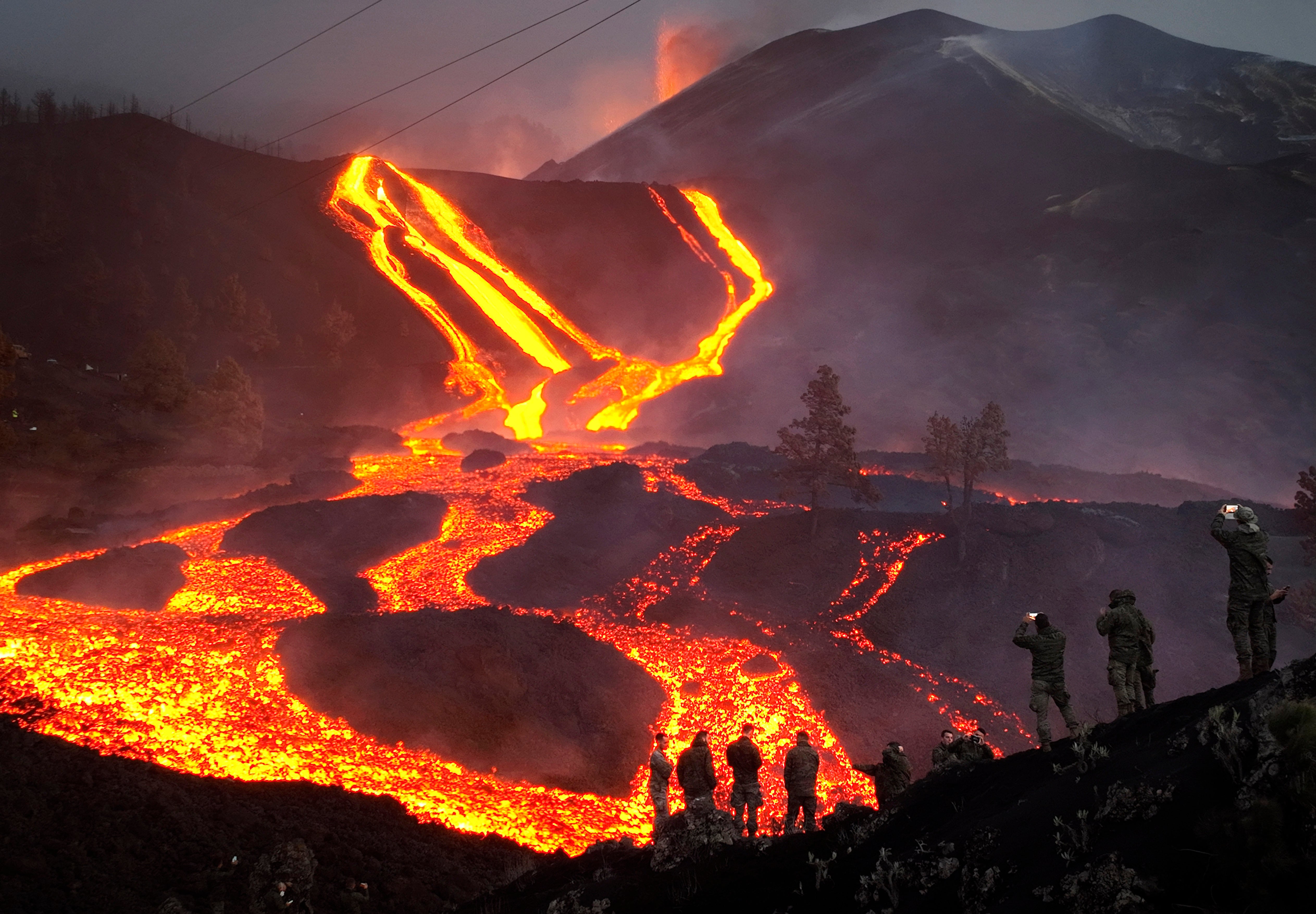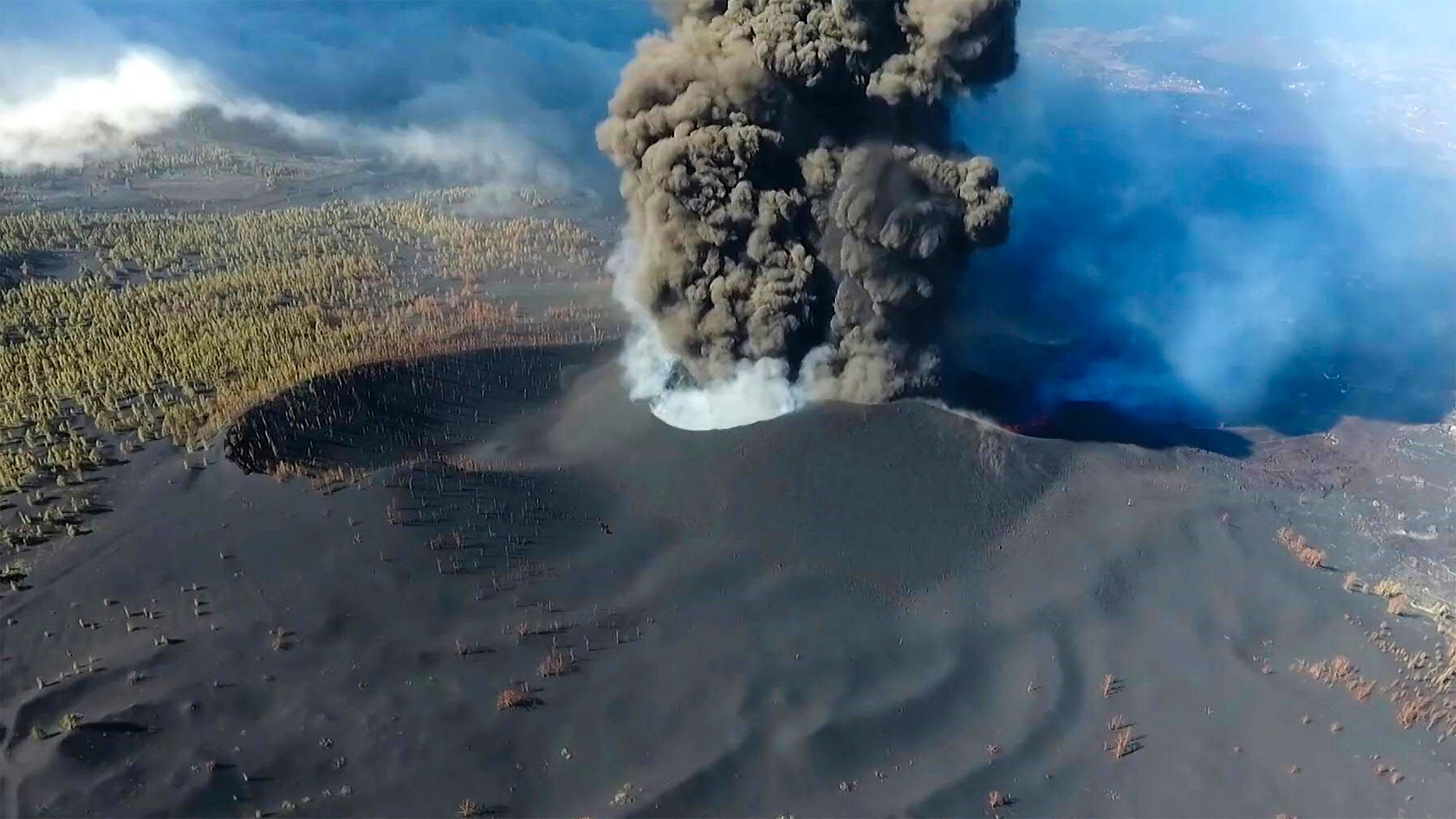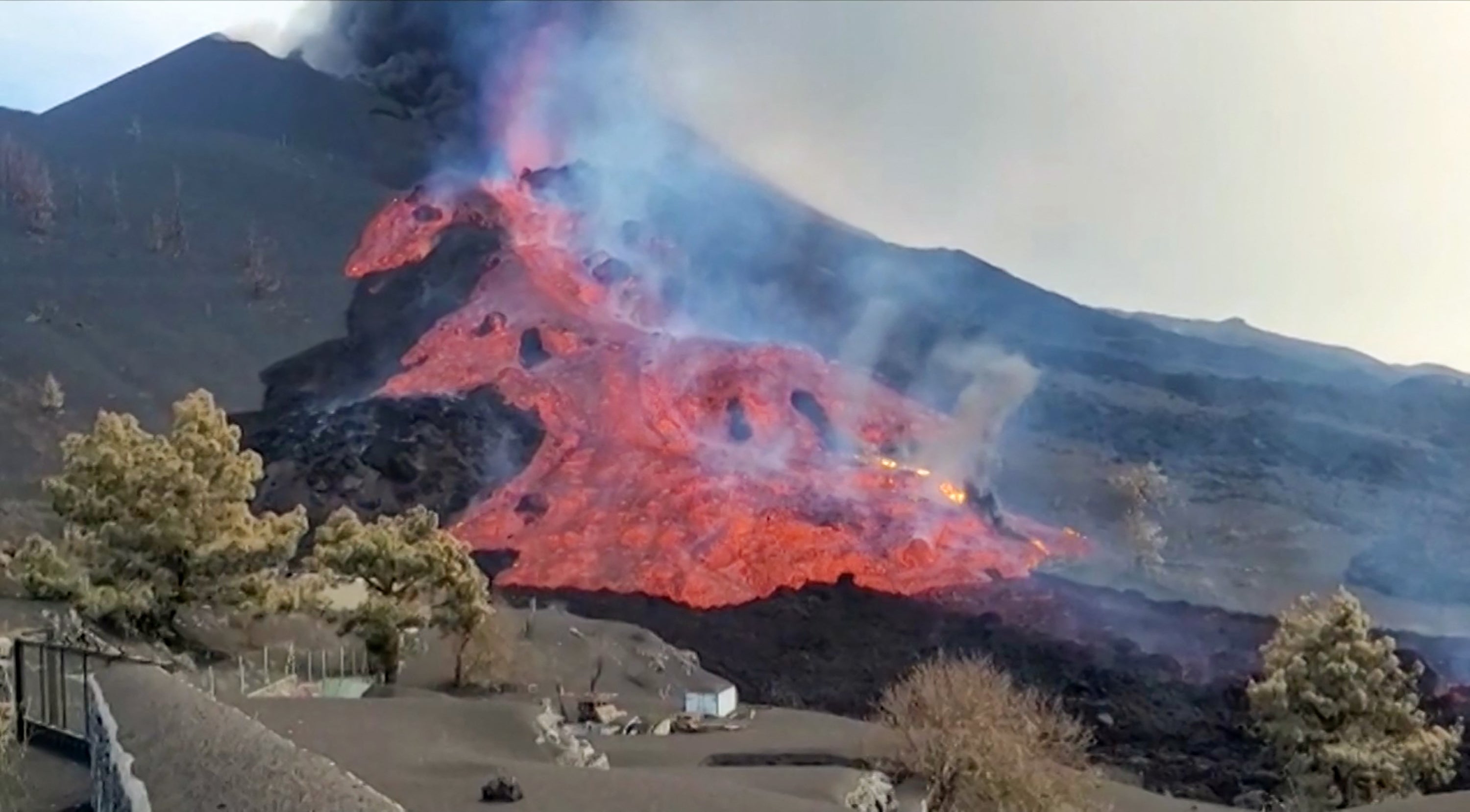Could ‘volcano tourism’ help La Palma get back on its feet?
Officials are hopeful that seismic tours could revive the fortunes of one of the poorest Canary Islands, reports Graham Keeley


Thousands of people had to be evacuated, hundreds of homes were buried under the molten lava and many more livelihoods wrecked as La Palma’s volcanic eruption laid waste to the Spanish island.
Now, however, one of the least visited of the Canary Islands may be able to capitalise on its unlikely claim to fame: seismic tourism.
Tourism chiefs in the Canary Islands are keen to take advantage of the appetite to see huge walls of solid lava up to 70 metres high and gases seeping from the crater, not to mention observing the aftermath of the dramatic eruption, which lasted for 85 days.
Demand for volcano-themed tours has soared and authorities are investing heavily in promoting La Palma, one of the poorest of the Canary Islands, located off western Africa, to rebuild its economy. Iceland and Hawaii saw a similar increase in visitors after they experienced volcanic eruptions.

At the same time, authorities are conscious of the needs of the 7,000 islanders who had to be evacuated as their homes were flattened by the molten rivers of white-hot lava. For some ‘palmeros’, as the islanders are called, the sight of tourists taking selfies by the side of their ruined homes or villages could be painful.
“Despite unleashing so much destruction, the volcano has created opportunities and tourism is one of them,” Mariano Hernández Zapata, head of the island’s government, told Reuters.
The number of cruise ships stopping at the island has increased, for example, Zapata said, and bringing in more tourists could help La Palma diversify economically, rather than relying heavily on agriculture.
The Spanish government announced last week a €9.5-million-euro (GBP 8.03 million) plan to promote tourism to La Palma after arrivals more than halved in the last four months of 2021.
Despite unleashing so much destruction, the volcano has created opportunities and tourism is one of them
“Now is the moment to take advantage of the wave of favourable interest towards the island from Spain and outside to convert this into tourist activity, showing that La Palma is a safe destination,” Yaiza Castilla, tourism minister for the Canary Islands, said.
The mayor of El Paso, one of the villages worst hit by the eruption, said a careful balancing act must be achieved.
“The volcano has to return to this island and its residents what it took from them,” said Sergio Rodriguez.
He was upbeat about potential projects seeking to exploit the eruption, including volcano trails, a science-focused convention centre or a cable car overlooking devastated areas.
Business is already booming for tour company Get Holidays, which runs an 11-hour trip around the volcano for tourists from the nearby island of Tenerife at €125 per adult.

A year ago, around 30 people a week would arrive at La Palma from Tenerife for a general tour. That number soared to 1,200 during the eruption and is at around 150 a week now, says the company’s Italian founder Basso Lanzone.
“Although the volcano has stopped, it is very impressive,” said German tourist Ulrike Wenen. “If it’s okay with the people who live here, which is the most important thing, it’s ideal to see it.”
Visitors were taken by bus to an area surrounded by mounds of ash and to where a lava stream had engulfed several houses. Several posed for pictures bu the sites.
Astrophysicist and La Palma resident Ana Garcia, 47, used to run four tours a week before the pandemic, showing visitors the island’s clear night skies. Now she is considering doing a course on volcanology.
“We need to think about how to survive first and think how we can change our business,” she said. She is currently making less than 10 per cent of her pre-pandemic revenue and struggles to gather enough people for one astronomy tour a week, but hopes the lure of the volcano can help revive her business’s fortunes.
We have to outsmart the volcano and look for ways for people to have hope, dreams and a future again
The volcano’s tongues of molten rock - up to 4km wide - spread over 1,219 hectares, destroying about 3,000 buildings and farmland. Of the island’s population of 84,000, some 7,000 had to be evacuated. La Palma also lost 690 of its 16,400 tourists beds.
Teacher Esmeralda Martin, 39, had just two minutes to flee her house of 10 years, which she shared with her husband and two small children. It now lies buried under 40 metres of lava. Her parents’ house and banana fields are gone too.
She is frustrated that authorities have ruled out rebuilding houses on lava for now, as it could take years to cool and the area now lacks water and electricity.
“Many families lost everything and it’s very difficult to start from zero,” Ms Martin says, looking at the black blanket of lava covering her former home. Her husband, Enrique Perez, 36, says the volcano could help boost tourism, but he believes it should not be a priority.
“The lives of people who lost everything are more important,” he says.
“We have to outsmart the volcano and look for ways for people to have hope, dreams and a future again,” added his wife.
Join our commenting forum
Join thought-provoking conversations, follow other Independent readers and see their replies
Comments
Bookmark popover
Removed from bookmarks